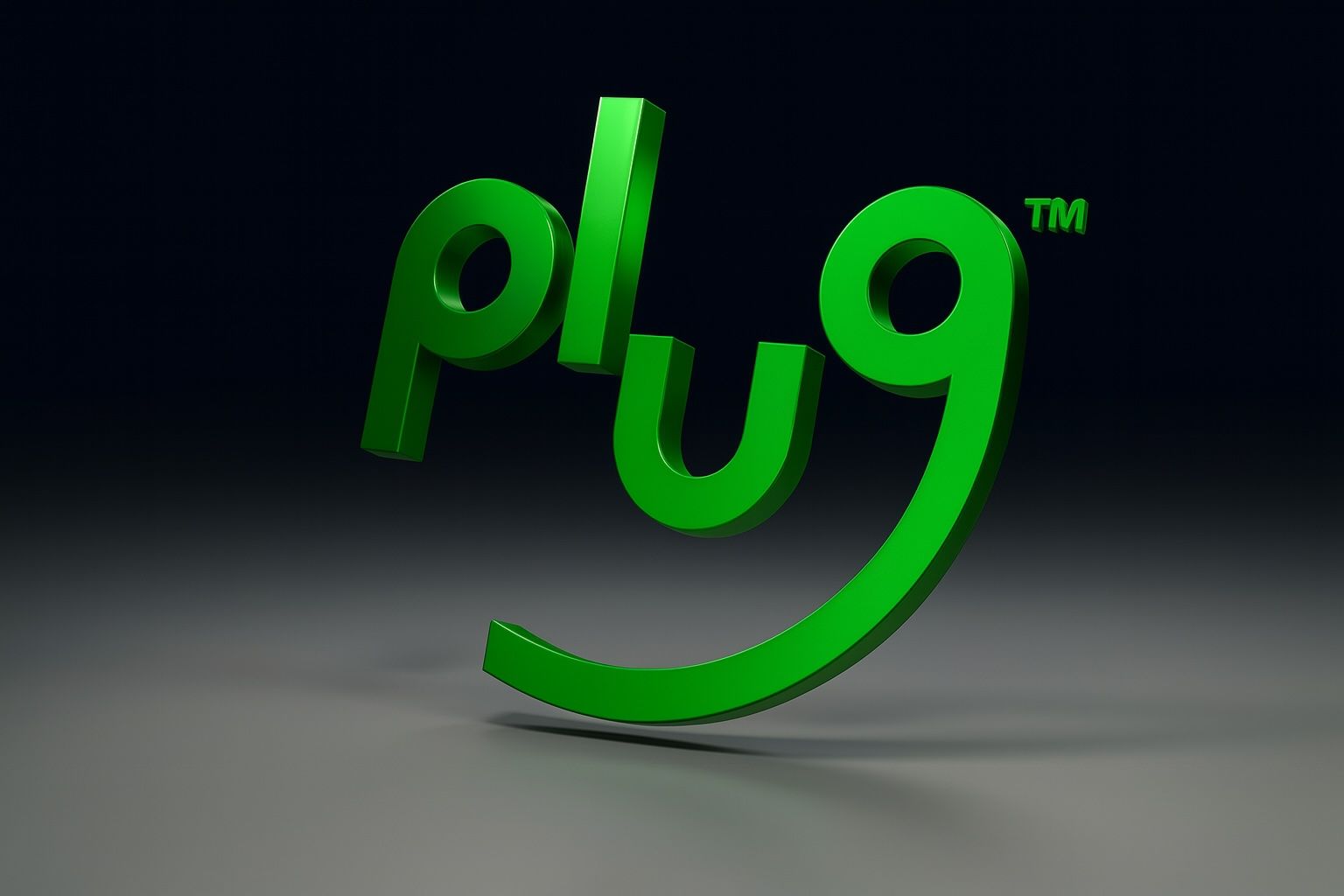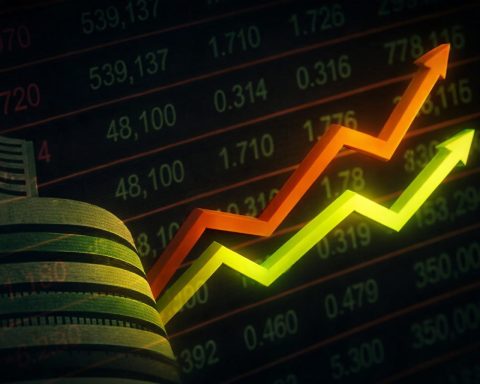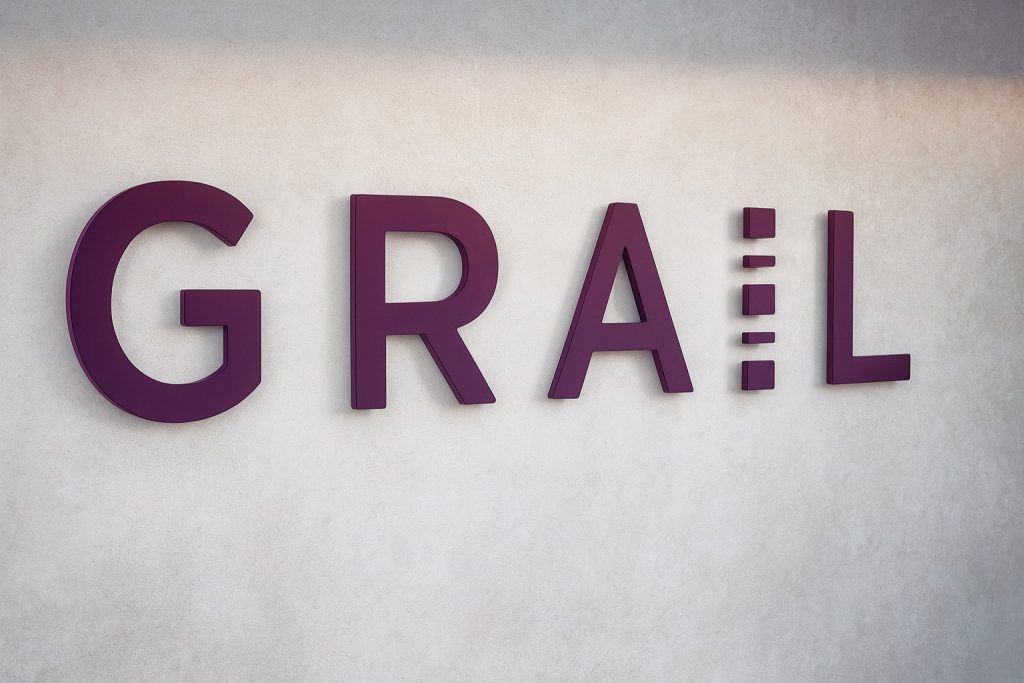- Stock Price & Surge: Plug Power (NASDAQ: PLUG) shares recently closed around $3.40 after a volatile week [1] [2]. The stock doubled since early September, touching a 52-week high around ~$4.18 by mid-October [3]. It remains up about 65% year-to-date after a stunning 170%+ rally in the last three months, though it pulled back ~5% on Oct. 15 amid profit-taking [4] [5]. (52-week range: $0.69 – $4.58 [6].)
- Rally Catalysts:Hydrogen hype and analyst upgrades ignited the surge. On Oct. 3, H.C. Wainwright doubled its 12-month price target to $7 (from $3) and reiterated a “Buy” – now the Street-high target – sparking a one-day +34.6% spike in PLUG [7]. Susquehanna also raised its target to $3.50 (from $1.80) around the same time [8]. These bullish calls – combined with a major hydrogen project milestone – sent PLUG to new highs and forced a short-squeeze, as over 30% of the float was sold short and bears scrambled to cover [9]. Peer fuel-cell stocks like Ballard Power (BLDP) also jumped ~23% in sympathy, a “halo effect” from Plug’s rally [10].
- Financial Boost & Metrics: Plug’s finances got a boost in early October: the company raised $370 million cash via a warrant deal with an institutional investor, and could receive up to $1.4 billion more if new warrants (strike price $7.75, a 100% premium to Oct. 7’s price) are fully exercised [11] [12]. In its last earnings (Q2 2025), revenue grew 21% YoY to $174 million [13], with electrolyzer sales tripling as new green hydrogen projects ramp up [14]. Aggressive cost cuts under “Project Quantum Leap” improved gross margins from –92% a year ago to –31% [15], helping narrow losses (Q2 net loss of $0.16 per share, slightly worse than expected [16]). The company ended Q2 with ~$140 million in unrestricted cash and an undrawn $300 M credit facility, easing near-term liquidity concerns [17].
- Leadership Change:Management shakeup at the top. On Oct. 7, Plug Power announced that long-time CEO Andy Marsh will step aside after nearly 20 years, with insider José Luis Crespo (currently Chief Revenue Officer) named as the next chief executive [18]. Crespo becomes President effective Oct. 10 and will take over as CEO after the 2025 annual report (March 2026) [19]. Marsh will transition to Executive Chairman. The succession news caused a brief ~3% dip in PLUG shares pre-market [20], as investors digested the leadership change. Crespo has been credited with building Plug’s $8 billion sales pipeline and major customer partnerships (Amazon, Walmart, Home Depot) [21].
- Hydrogen Deals & Innovation: Plug is making strides in green hydrogen projects. On Oct. 1, it delivered the first 10 MW electrolyzer for Galp Energia’s Sines refinery in Portugal – the first of ten units for a 100 MW green hydrogen plant (one of Europe’s largest) set to produce ~15,000 tons of H₂ annually and cut 110,000+ tons of CO₂ [22]. Andy Marsh said this proves “large-scale hydrogen is ready today” as a model for refinery decarbonization [23] [24]. Plug also extended a major hydrogen fuel supply agreement with a U.S. industrial gas partner through 2030, securing reliable hydrogen at lower cost for its refueling network [25]. These partnerships expand Plug’s global reach (including a 2 GW electrolyzer deal in Uzbekistan announced mid-year) and underpin future revenue streams.
- Analyst Views & Forecasts: Wall Street is split on PLUG. One analyst (HSBC) upgraded Plug to “Strong Buy” amid the rally [26], and The Motley Fool projected the stock “could soar 50% by 2026” if current trends continue [27]. However, many remain cautious – Plug has never turned an annual profit, and even bullish analysts expect losses to continue into 2026. The consensus rating is only Hold, and the average 12-month price target is ~$2.5 [28] [29] – ~30% below the current price – implying that experts see the recent run-up as potentially overextended. Price targets now range $1 to $7 (the latter high from HCW), reflecting wildly mixed opinions [30] [31].
- Investor & Market Sentiment: Plug’s dizzying run has drawn in investors large and small. Options traders piled in – at one point call option volume jumped 66% above average during the October frenzy [32]. Institutional investors have also upped their stakes: roughly 43% of PLUG shares are now owned by institutions and hedge funds [33], and several funds added positions in Q3 2025 [34]. The stock’s volatility (beta ~2.2 [35]) and meme-stock vibes (retail chat forums lit up as PLUG surged) make it a risky, speculative play. Still, the broader hydrogen sector buzz – aided by government incentives – has improved sentiment: the U.S. recently extended a 30% hydrogen fuel cell tax credit through 2032, and prolonged green hydrogen production credits to 2028-start projects [36]. Plug’s CEO called the new energy bill “one of the most meaningful policy wins” for the hydrogen industry [37]. These tailwinds, alongside surging electricity costs (which make green hydrogen more competitive, according to HCW’s thesis [38]), have strengthened the long-term investment narrative even as skeptics urge caution.
PLUG Stock Soars, Then Volatile Pullback
Plug Power’s stock price has been on a wild ride in October. After languishing in penny-stock territory over the summer, PLUG erupted into a full-fledged rally this fall. Shares surged from the low-$2 range in September to over $4 by mid-October, marking a 170%+ gain in about six weeks [39]. The peak came on October 6 when PLUG hit a new 52-week high around $4.50 intraday following a flurry of bullish news [40]. At that level, the stock had more than doubled from early September and was trading at its highest in over a year [41]. However, the swift run-up also led to volatility. By the end of the week, profit-taking set in – on October 15 the stock slid ~4.8% [42], and it continued to ease in the next sessions, closing around $3.40 on Oct. 17 [43]. Even after this pullback, PLUG remains one of 2025’s best-performing clean energy stocks (up ~65% year-to-date) and far above its 52-week low of just $0.69 [44]. The question now is whether this hydrogen high-flyer can sustain its momentum or if a deeper correction looms.
Several technical indicators reflect PLUG’s changing trend. The stock’s 50-day moving average (~$2.17) and 200-day average (~$1.52) lag far below the current price [45], underscoring how sharply PLUG spiked in recent weeks. Such gaps often signal an overbought condition. Indeed, trading volumes exploded during the rally, and momentum indicators reached extremes. Traders note that rapid run-ups like PLUG’s are often followed by bouts of consolidation or volatility – which we’ve started to see. In one recent session, PLUG fell about 9.6% in a single day [46], a reminder that quick reversals can occur. Still, the stock’s relative strength versus the broader market is evident: despite a choppy macro environment, PLUG vastly outperformed the S&P 500 in early Q4 2025. Bulls argue that the uptrend remains intact so long as shares hold above the $3 level (a price that was unimaginable just two months ago). For now, PLUG sits in the mid-$3s, roughly 20% off its peak – a pivotal spot as investors await the next catalyst.
News Drivers: Hydrogen Hype, Deals, and a Short Squeeze
The catalyst for Plug Power’s October eruption can be summed up in two words: hydrogen hype. In the first week of October, a confluence of upbeat developments unleashed a wave of buying. On October 3, H.C. Wainwright shocked the market with an ultra-bullish analyst call, not only reiterating a Buy rating on PLUG but jacking its price target up to $7 (from $3) [47]. This aggressive call – implying +107% upside from the pre-upgrade price – instantly shifted sentiment. PLUG’s stock rocketed 34.6% that day to around $3.80 [48], on 10× normal volume, as traders piled in to chase the new target. It was Plug’s largest single-day gain in years, sending the stock to a 52-week high. By the following Monday (Oct. 6), the momentum carried into pre-market trading, with PLUG briefly touching $4.50 (+18% from Friday’s close) [49] before cooling.
H.C. Wainwright’s analyst Amit Dayal justified the bold call by pointing to improving fundamentals for green hydrogen. Dayal argued that surging electricity prices and fresh pro-nuclear energy policies are making green hydrogen economically competitive, which in turn boosts demand for Plug’s electrolyzers and fuel cells [50]. Essentially, if grid power gets expensive, companies will look more to alternatives like hydrogen – a thesis that plays into Plug’s hands. This narrative, combined with optimism about Plug’s cost cuts and project pipeline, helped flip market psychology from skepticism to “fear of missing out.” Importantly, another analyst upgrade hit around the same time: Susquehanna’s analyst Biju Perincheril lifted his PLUG target by 94% (from $1.80 to $3.50), citing a “more optimistic view” on Plug’s outlook [51] [52]. While Susquehanna kept a neutral rating, the signal of a higher target added fuel to the fire. Within days, PLUG was trading above Susquehanna’s new target – an indication of just how euphoric the buying became.
Adding to the frenzy, real-world news bolstered the bullish case. On October 1, Plug Power announced it had delivered a 10 MW electrolyzer – the first of a planned series – for a 100 MW green hydrogen project at Galp’s Sines refinery in Portugal [53]. This is a flagship project (the largest PEM electrolyzer installation in Europe) expected to produce ~15,000 tonnes of green hydrogen per year [54]. The milestone demonstrated that Plug is executing on large-scale projects globally, not just selling a story. That same week, reports also highlighted Plug’s new 2 GW electrolyzer deal in Uzbekistan (with partner Allied Green) and an extended hydrogen supply agreement in the U.S. through 2030 [55] – signaling that Plug is locking in both demand (electrolyzer orders) and supply (fuel for its hydrogen refueling network) for the long term. This one-two punch of bullish analyst commentary and major project wins created a perfect storm: investors rushed in, and critically, so did short-sellers – but in the opposite direction.
Indeed, Plug Power’s rally became a textbook short squeeze. Going into October, PLUG had an exceptionally high short interest – over 30% of its float was sold short [56] by traders betting on further declines. The sudden spike in price caught these bears off guard. As PLUG shares vaulted higher, many shorts were forced to buy back shares to cover their positions (to limit losses), which only drove the price up further in a self-reinforcing cycle [57]. “We’re seeing a classic short squeeze in action,” noted one market strategist, as PLUG’s 3-month gain hit ~168% and left skeptics scrambling [58]. The effect spilled over to other hydrogen names: Ballard Power (BLDP), a fellow fuel-cell producer, soared +23% on Oct. 3 (and even popped another ~5% after hours) despite no news of its own [59]. Traders attributed Ballard’s jump entirely to a “halo effect” from Plug – when one stock in a sector skyrockets, sentiment lifts for its peers too [60]. However, this sector-wide bounce was selective: some clean-tech stocks like Bloom Energy (fuel cells) and FuelCell Energy actually fell in early October after negative analyst notes, highlighting that euphoria wasn’t universal [61]. Overall, though, the first half of October saw a torrent of positive headlines around Plug Power, driving one of its strongest rallies on record.
Financials: Cash Infusion and Results Improve (But Losses Remain)
While hype played a role, Plug Power also took concrete steps to shore up its finances during this period. Notably, on October 8, the company disclosed a creative funding maneuver that significantly bolsters its cash reserves. Plug entered a warrant inducement deal with a large institutional investor, resulting in an immediate exercise of warrants that pumped approximately $370 million into the company’s coffers [62] [63]. Here’s how it worked: an existing investor agreed to early-exercise 185.4 million warrants at $2.00/share (originating from a prior financing in March 2025), giving Plug $370 M in proceeds [64] [65]. In exchange, Plug issued that investor an equivalent number of new warrants – but with a much higher strike price of $7.75 (about 100% above PLUG’s stock price at the time) [66] [67]. If that investor fully exercises these new warrants down the road (by 2028), Plug could collect an additional $1.4 billion in gross proceeds [68] [69]. There’s no guarantee the $7.75 warrants will ever be in the money, but the deal immediately strengthens Plug’s balance sheet and signals confidence from at least one deep-pocketed investor. Analysts viewed this as a smart capital raise – effectively leveraging the stock’s rally to get cash now, while deferring dilution unless the stock roughly doubles again (to >$7.75). “Improves Plug Power’s financial position and accelerates growth initiatives,” the company said of the transaction [70]. The stock didn’t react dramatically to the news (likely because the deal was expected to close by Oct. 9 [71]), but it removes some overhang regarding Plug’s need for funding, which had weighed on shares earlier in the year.
In terms of core financial performance, Plug Power’s latest quarterly results show a mix of robust growth and ongoing losses – a “two steps forward, one step back” story. Q2 2025 (reported August 11) saw revenue of $173.97 million, a healthy 21% increase year-on-year [72]. Growth was driven across Plug’s business lines – from its GenDrive fuel-cell systems (used in forklifts at Amazon, Walmart, etc.) to GenFuel hydrogen solutions and especially its GenEco electrolyzers, where sales tripled vs. a year ago to about $45 million [73]. This surge in electrolyzer revenue reflects the momentum of new green hydrogen projects breaking ground (like the Galp deal in Europe and other global partnerships). Crucially, Plug’s management has been intensely focused on cost reduction under an initiative called “Project Quantum Leap.” Those efforts are bearing fruit: in Q2, gross margin improved to –31% (still negative, but far better than the –92% in Q2 2024) [74]. The company slashed operating costs through measures like workforce reductions, facility consolidations, and supply chain efficiencies [75] [76]. As a result, cash burn has slowed – Plug ended Q2 with $140+ million in cash (before the October raise) and also had a $300 M untapped credit line for liquidity [77].
Despite these improvements, Plug Power is not out of the red yet. The Q2 net loss was $0.16 per share, slightly wider than Wall Street’s expected –$0.15 [78]. Plug’s net profit margin was a grim –293% for the quarter [79], reflecting the still-high costs and some one-time charges (including non-cash costs related to the cost-cutting program). The company has never reported a full-year profit in its history, and 2025 will be no exception – analysts forecast continued losses this year and next before a potential breakeven in 2027 or later [80] [81]. However, CEO Andy Marsh emphasized on the earnings call that the “Quantum Leap” cost actions are beginning to bear fruit, citing expectations for significantly lower hydrogen fuel costs in the second half of 2025 as Plug’s new production facilities ramp up [82]. Indeed, Plug has been investing in its own green hydrogen plants (like the one in Georgia, which began producing liquid hydrogen in late 2024 [83]), aiming to reduce reliance on third-party suppliers and improve margins. With the fresh $370 M infusion, Plug should have over half a billion dollars of pro-forma cash, giving it runway to execute its growth plans (and importantly, to avoid dilutive equity raises at low prices, a trap it fell into in the past [84]). In summary, Plug’s financial picture is improving but still challenged: sales are rising strongly and costs are coming down, yet profitability remains a distant goal. The recent rally has given management an opportunity to capitalize the company for the next phase – now they must deliver on the promised path to breakeven.
CEO Shakeup and Company Outlook
A major corporate development unfolded amid the market excitement: Plug Power’s leadership is transitioning for the first time in decades. On October 7, the company announced that Andy Marsh, the CEO since 2008 and the public face of Plug’s rise in the hydrogen industry, will be stepping down from the chief executive role in 2026 [85]. Plug promoted José Luis Crespo, its Chief Revenue Officer, as Marsh’s successor – a move signaling continuity and an emphasis on commercial execution. Crespo took on the title of President as of Oct. 10 and will officially become CEO after the 2025 annual report is filed (around March 2026) [86]. Andy Marsh isn’t exiting entirely; he will stay on as Executive Chairman, ensuring his expertise and industry relationships remain available to the company [87]. The market’s initial reaction to the news was cautious – PLUG shares dipped ~3% in pre-market trading on Oct. 7 when the announcement hit [88]. This mild pullback likely reflected uncertainty about leadership change in the middle of a big stock rally. However, many analysts view the succession plan positively. Marsh has been instrumental in building Plug into a hydrogen leader, but the company’s chronic losses and execution stumbles in recent years had drawn criticism. By elevating Crespo – an operations and sales-focused insider – Plug is doubling down on scaling revenue and improving execution on its massive project backlog.
José Luis Crespo brings a formidable resume: he joined Plug in 2014 and is credited with building an $8 billion sales pipeline at the company [89]. He has overseen key customer relationships with giants like Amazon, Walmart, and Home Depot [90] – all early adopters of Plug’s fuel-cell forklifts and hydrogen solutions. His deep familiarity with Plug’s product lineup (fuel cells, electrolyzers, hydrogen supply) and customers suggests a seamless transition. “Crespo knows the customers, knows the tech, and knows the team – he’s the logical choice to take Plug into its next growth phase,” one industry observer noted. Under Crespo’s upcoming leadership, Plug is expected to focus on converting that $8 B pipeline into actual revenue, improving project execution timelines, and possibly a sharper eye on profitability. Marsh’s move to Executive Chair could free him to focus on strategic partnerships and policy – areas where he excels – while Crespo runs day-to-day operations. It’s worth noting that Plug’s announcement came just as competitor Bloom Energy (another fuel cell firm) faced activist pressure for management changes, highlighting how investors are seeking fresh approaches in clean tech companies that have yet to turn profits.
In public comments around the CEO transition, Andy Marsh struck an optimistic tone. He stated that Plug Power is “in a much better place now” after the cost cuts and with supportive policies in place [91]. Marsh also indicated the leadership change was long-planned as part of a succession strategy, not a reaction to any single issue. The company used the moment to reiterate its long-term vision: by 2030, Plug aims to have a fully built-out “hydrogen ecosystem” – producing 500 tons of green hydrogen per day, supplying that hydrogen to customers, and powering everything from forklifts to long-haul trucks and data centers with its fuel cells. Crespo, as the new leader, will inherit both the opportunities and challenges: Plug’s market is expanding, but so is competition, and the company must prove it can scale efficiently. In the near term, investors will be watching how Crespo lays out his strategy (he’ll likely present at investor days or on earnings calls in coming months) and whether any shifts in priorities occur (for example, more focus on profitability or specific market segments). For now, the leadership change represents a passing of the torch at Plug Power, with the long-time architect stepping back and a new executor stepping up – a development that will shape Plug’s trajectory as it strives to become a hydrogen energy powerhouse.
Hydrogen Sector Context: Tailwinds vs. Headwinds
Plug Power’s rollercoaster is unfolding against a complex backdrop for clean energy and hydrogen tech stocks. On one hand, the sector is riding significant tailwinds – supportive government policies, rising corporate decarbonization goals, and technological breakthroughs. On the other hand, macro challenges and policy uncertainty have introduced headwinds, making investors somewhat skittish despite the recent euphoria.
In terms of policy support, 2025 brought a major victory for the hydrogen industry. In July, the U.S. Congress (in a rare bipartisan move) passed a sweeping energy bill – jokingly dubbed the “One Big Beautiful Bill Act” – that extended and expanded clean energy tax credits. Plug Power’s CEO Andy Marsh lauded it as “one of the most meaningful policy wins… for the entire hydrogen fuel cell sector in the last several years” [92]. Crucially for Plug, the law reinstates a 30% investment tax credit (ITC) for fuel-cell projects through 2032 and keeps the hydrogen Production Tax Credit (PTC) alive for any green H₂ projects that begin construction before 2028 [93]. These incentives directly benefit Plug’s offerings: the fuel-cell ITC makes it cheaper for customers to buy Plug’s forklift fuel cells and stationary power units, while the hydrogen PTC improves the economics of green hydrogen plants (like those using Plug’s electrolyzers) [94] [95]. Marsh noted the extensions give Plug “time and flexibility to sequence our hydrogen plant build-out more effectively” without racing deadlines [96]. In short, U.S. policy is currently a tailwind for Plug – a notable shift from earlier in the year, when uncertainty over tax credit rules had stalled some projects. (Notably, an initial version of President Trump’s 2025 tax bill proposed slashing clean energy credits, but the final legislation preserved key hydrogen incentives [97].) Outside the U.S., Europe and Asia continue to push hydrogen strategies as well, funding pilot projects and infrastructure – providing a global market for Plug’s products.
However, investors must also weigh some headwinds. High interest rates and tighter capital markets in 2025 have generally made it harder for unprofitable tech firms (like Plug) to raise money – which is why Plug’s recent $370 M cash infusion was so critical. The broader stock market has also been fickle toward green tech. For much of 2023–2024, hydrogen stocks were in a deep bear market after over-hyped expectations in 2021 weren’t met. Even after Plug’s giant bounce, many analysts remain skeptical, as evidenced by the low consensus price targets [98] [99]. Some point out that interest in hydrogen ebbs and flows; it’s a promising solution for hard-to-decarbonize sectors, but adoption has been slower than initially forecast, and competition (from batteries, etc.) remains. Additionally, changes in the political landscape can quickly alter the outlook – for instance, if policies were to shift after the 2026 U.S. elections, it could impact the economics of hydrogen projects. It’s also worth mentioning that clean energy stocks have faced selling pressure in 2025 amid surging oil & gas profits and, ironically, an “AI boom” that has sucked a lot of investment dollars into tech stocks. (Plug even found itself tangentially caught in the AI hype: some speculators touted Plug’s hydrogen backup systems as a play on powering energy-hungry AI data centers, though skeptics call that narrative a stretch [100].)
Within the fuel cell & hydrogen niche, there’s a clear divide in performance. Plug Power and Ballard (BLDP) have rallied strongly in recent weeks, while others like Bloom Energy (BE) and FuelCell Energy (FCEL) lag behind or fell on bad news [101]. This suggests investors are picking perceived “winners” in the space rather than buying the whole sector. Plug’s edge, bulls say, is its vertical integration (it offers everything from electrolyzers to fuel-cell forklifts to hydrogen fuel services) and its head start in building a green hydrogen network. Bears counter that execution risk is high – Plug has many projects and products in motion, and not all may pan out as hoped.
From a market sentiment standpoint, Plug Power’s story in late 2025 embodies both hope and caution. The hope is that we’re witnessing the beginning of a genuine turnaround – cost reductions, big orders, and supportive policy could finally put Plug on a path to profitability in a booming hydrogen economy. The caution is that we’ve seen hype around Plug before (the stock soared in 2020–21 only to collapse thereafter), and the company still must prove it can deliver consistent results. Investor sentiment has improved significantly from mid-year lows – Plug’s rally and heavy trading volume indicate renewed risk appetite for clean tech – but it remains a show-me story. The coming months will be telling: Plug is expected to report Q3 2025 results in early November, where investors will look for evidence that margins continue to improve and that the company’s lofty 2025 revenue guidance (if any) is on track. Any upside surprise or new deal announcement could extend the rally, while disappointments (e.g. wider losses or project delays) might trigger another pullback.
Analyst Forecasts and Investor Outlook
The dramatic movements in PLUG have Wall Street analysts split on what comes next. Optimists argue the recent surge is just the first leg of a longer comeback. For instance, a bullish analysis on Nasdaq.com (from The Motley Fool) predicted Plug Power could climb another 50% by 2026 if the current growth trend in electrolyzer deployments continues [102]. The piece noted Plug’s stock already “surged 77%” after delivering the Portugal electrolyzer and getting that bold analyst upgrade [103], suggesting that execution on big projects can indeed jolt the stock upward. Some analysts have accordingly lifted their long-term forecasts: we’ve seen 2026 price targets in the $4–$7 range from various firms, indicating expectations that Plug’s shares might be higher in a year or two – but there’s a lot of disagreement on how much higher [104]. HC Wainwright’s $7 remains the high-water mark on the Street [105], essentially betting that Plug’s fundamentals will catch up to the hype. Craig-Hallum Capital also raised its target to $4 (from $2) during the rally, maintaining a Buy rating and citing improved growth prospects [106]. And notably, HSBC upgraded Plug to a “Strong Buy” on Oct. 9, showing that even some previously neutral observers are turning outright bullish [107].
On the flip side, many analysts urge caution and even outright avoidance of PLUG at these levels. As of mid-October, Plug Power had 1 Strong Buy, 5 Buys, 7 Holds, and 6 Sell-equivalent ratings – a wide dispersion of opinions [108]. MarketBeat data shows the average 12-month target is only ~$2.47 [109], implying significant downside from the current price. In other words, the consensus view is that the stock’s run-up has outpaced the reality of the business. Firms with Sell or Hold ratings point to Plug’s continued cash burn, the need for flawless execution to justify its valuation, and the risk that this rally is driven by transient factors (short-covering and retail trading) rather than a fundamental inflection. As an illustration, Weiss Ratings recently reiterated a “Sell (D-)” on Plug even as the stock was spiking [110]. Similarly, a Seeking Alpha analyst titled “Plug Power: Sell On Unwarranted AI Data Center Hype” argued the 150% rally was overdone and based on speculative narrative rather than concrete earnings improvement [111]. Until Plug proves it can generate positive cash flow or at least hit its financial targets, skeptics remain plentiful.
What’s next for PLUG? In the near term, most experts say the stock will be news-driven. Watch for earnings announcements, new contracts, or policy changes: any additional big project wins, partnerships, or better-than-expected financial metrics could extend Plug’s momentum. Conversely, any stumble – such as missing delivery timelines, encountering cost overruns, or issuing weak guidance – could deflate the hype quickly. The extreme volatility means PLUG is a trader’s stock for now; as one market commentator quipped, the frequent 10–20% swings “can present good opportunities” for nimble investors, but also highlight the risks and fickle confidence in this name [112] [113].
For longer-term investors, the bull vs. bear divide on Plug Power boils down to whether one believes in the hydrogen revolution and Plug’s ability to carve out a dominant role in it. The company’s supporters see a massive addressable market – clean hydrogen could transform industries from trucking to steelmaking, growing at 30–40% annually this decade [114] – and they position Plug as a vertically integrated leader ready to supply that boom. They also point to tangible progress: real revenue growth, improved margins, and the backing of big customers and strategic investors (plus government loans, like a conditional $1.66 B DOE loan offer in 2024 for Plug’s hydrogen plants [115]). Critics, however, note that Plug has a history of overpromising and underdelivering, and that even if the hydrogen pie grows, Plug must fiercely compete to capture it while eventually turning a profit – a challenge after decades of losses. In CEO Marsh’s own words, the company is “no longer forced into a race” and can grow with the market rather than against ticking clocks [116]. That may be true thanks to policy support and a better cash position. But ultimately, execution is key.
As of October 18, 2025, Plug Power’s stock finds itself at a crossroads of excitement and skepticism. The next few weeks (and the upcoming earnings report) will test whether the recent hydrogen hype has real legs or if PLUG will settle back down from this dizzying high. For investors and observers, one thing is certain: Plug Power has reentered the spotlight, and its journey from here will be closely watched as a barometer for the broader clean hydrogen industry’s promise and perils.
Sources: Official company releases [117] [118]; Reuters and financial news (Yahoo! Finance, Bloomberg) [119] [120] [121] [122]; industry analysis from TS² (TechStock²) [123] [124] [125] [126]; MarketBeat and Nasdaq/Motley Fool reports [127] [128].
References
1. www.fool.com, 2. www.marketbeat.com, 3. ts2.tech, 4. ts2.tech, 5. ts2.tech, 6. www.marketbeat.com, 7. ts2.tech, 8. ts2.tech, 9. ts2.tech, 10. ts2.tech, 11. www.ir.plugpower.com, 12. www.ir.plugpower.com, 13. ts2.tech, 14. ts2.tech, 15. ts2.tech, 16. ts2.tech, 17. ts2.tech, 18. www.reuters.com, 19. www.reuters.com, 20. www.reuters.com, 21. www.reuters.com, 22. ts2.tech, 23. ts2.tech, 24. ts2.tech, 25. ts2.tech, 26. ts2.tech, 27. ts2.tech, 28. ts2.tech, 29. ts2.tech, 30. www.marketbeat.com, 31. www.marketbeat.com, 32. www.marketbeat.com, 33. www.marketbeat.com, 34. www.marketbeat.com, 35. www.marketbeat.com, 36. ts2.tech, 37. ts2.tech, 38. ts2.tech, 39. ts2.tech, 40. ts2.tech, 41. ts2.tech, 42. ts2.tech, 43. www.fool.com, 44. www.marketbeat.com, 45. www.marketbeat.com, 46. finance.yahoo.com, 47. ts2.tech, 48. ts2.tech, 49. ts2.tech, 50. ts2.tech, 51. www.tipranks.com, 52. finance.yahoo.com, 53. ts2.tech, 54. ts2.tech, 55. ts2.tech, 56. ts2.tech, 57. ts2.tech, 58. ts2.tech, 59. ts2.tech, 60. ts2.tech, 61. ts2.tech, 62. www.ir.plugpower.com, 63. www.ir.plugpower.com, 64. www.ir.plugpower.com, 65. www.ir.plugpower.com, 66. www.ir.plugpower.com, 67. www.ir.plugpower.com, 68. www.ir.plugpower.com, 69. www.ir.plugpower.com, 70. www.ir.plugpower.com, 71. finance.yahoo.com, 72. ts2.tech, 73. ts2.tech, 74. ts2.tech, 75. ts2.tech, 76. ts2.tech, 77. ts2.tech, 78. ts2.tech, 79. ts2.tech, 80. ts2.tech, 81. ts2.tech, 82. ts2.tech, 83. www.reuters.com, 84. www.reuters.com, 85. www.reuters.com, 86. www.reuters.com, 87. www.reuters.com, 88. www.reuters.com, 89. www.reuters.com, 90. www.reuters.com, 91. ts2.tech, 92. ts2.tech, 93. ts2.tech, 94. ts2.tech, 95. ts2.tech, 96. ts2.tech, 97. www.reuters.com, 98. ts2.tech, 99. ts2.tech, 100. seekingalpha.com, 101. ts2.tech, 102. ts2.tech, 103. ts2.tech, 104. ts2.tech, 105. ts2.tech, 106. ts2.tech, 107. ts2.tech, 108. ts2.tech, 109. ts2.tech, 110. www.marketbeat.com, 111. seekingalpha.com, 112. ts2.tech, 113. ts2.tech, 114. ts2.tech, 115. www.reuters.com, 116. ts2.tech, 117. www.ir.plugpower.com, 118. www.ir.plugpower.com, 119. www.reuters.com, 120. www.reuters.com, 121. ts2.tech, 122. ts2.tech, 123. ts2.tech, 124. ts2.tech, 125. ts2.tech, 126. ts2.tech, 127. www.marketbeat.com, 128. ts2.tech







